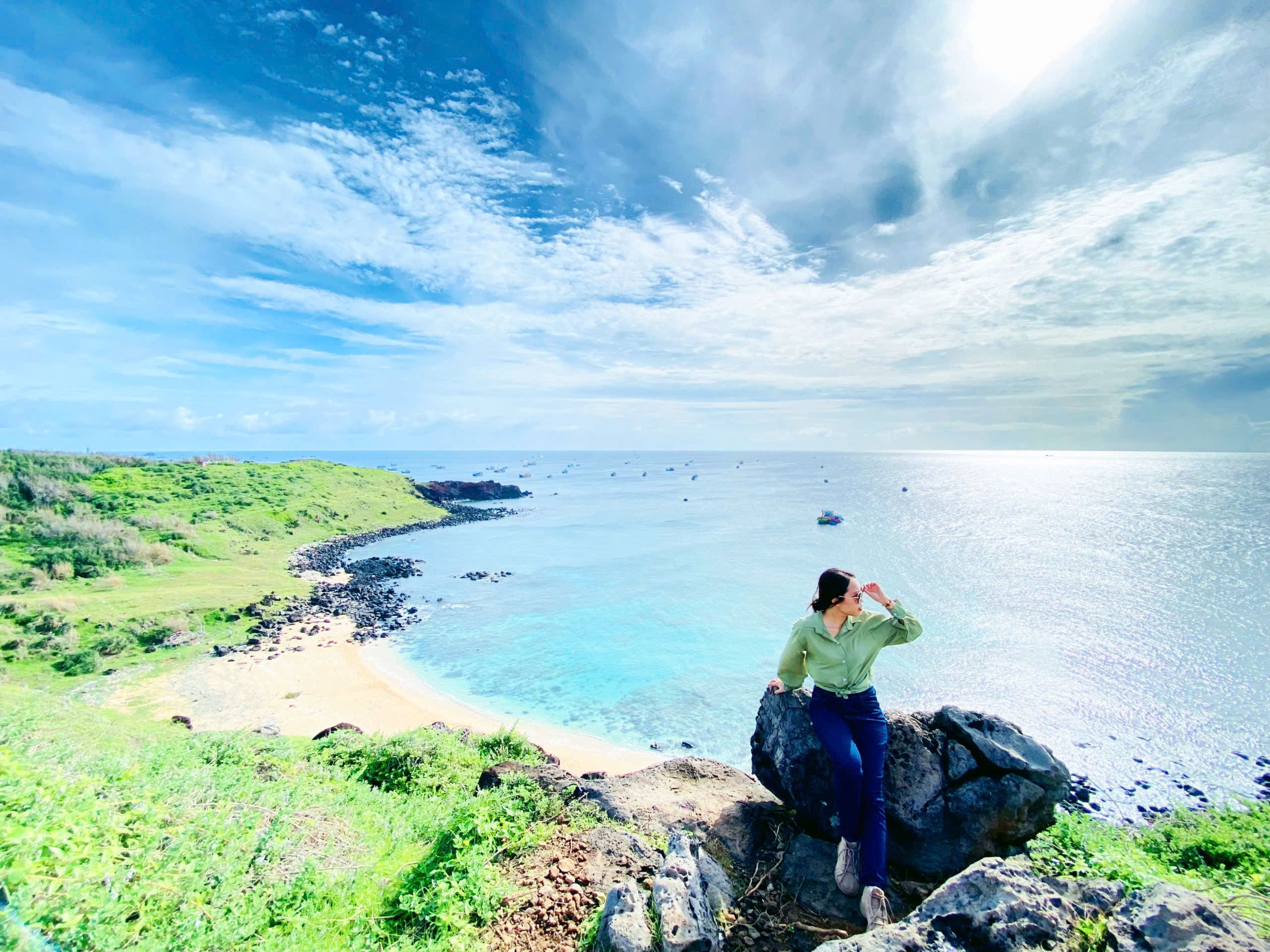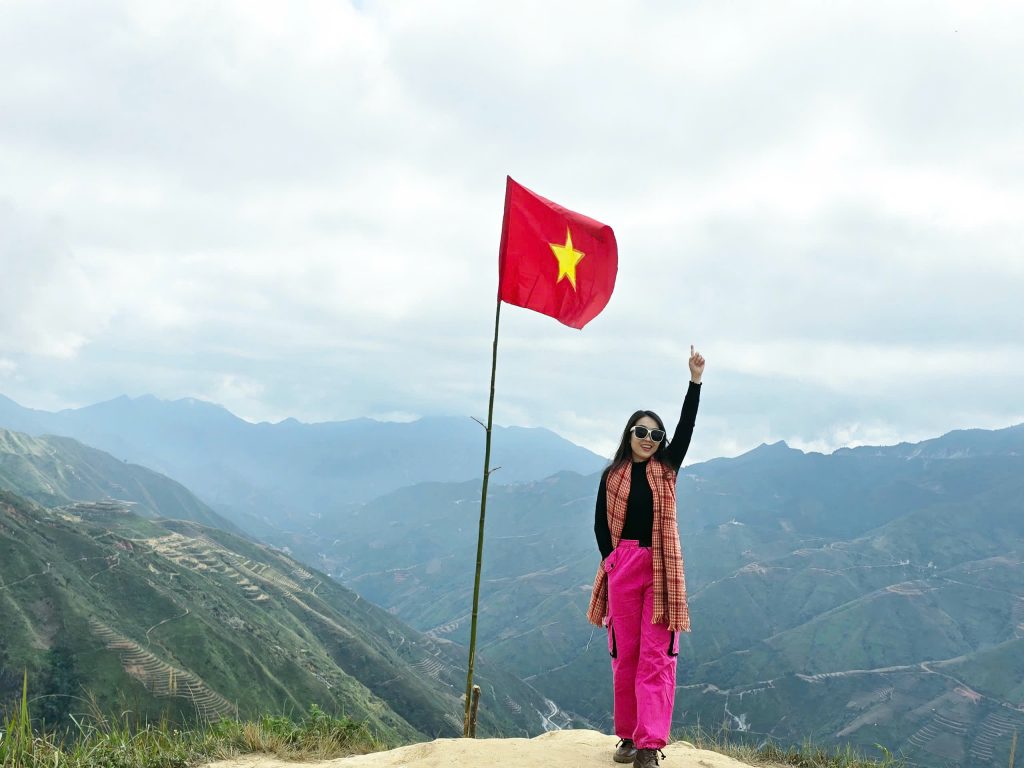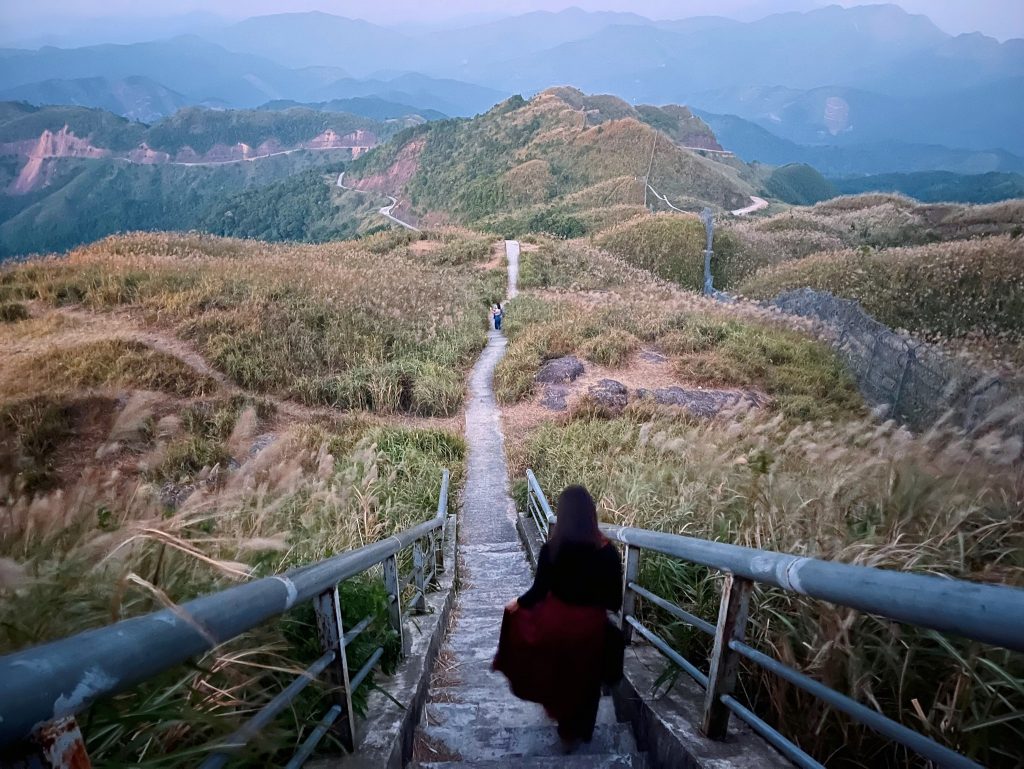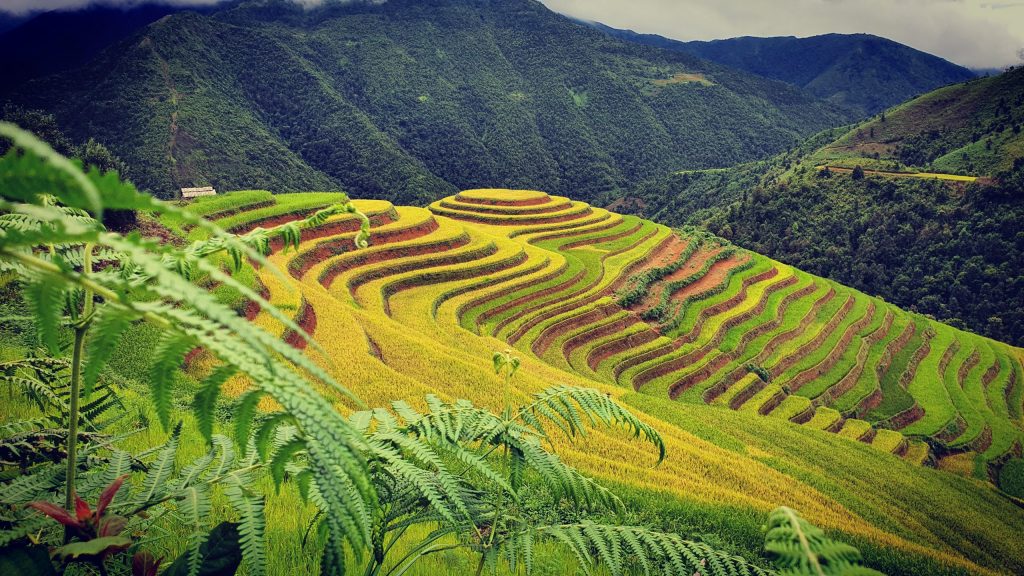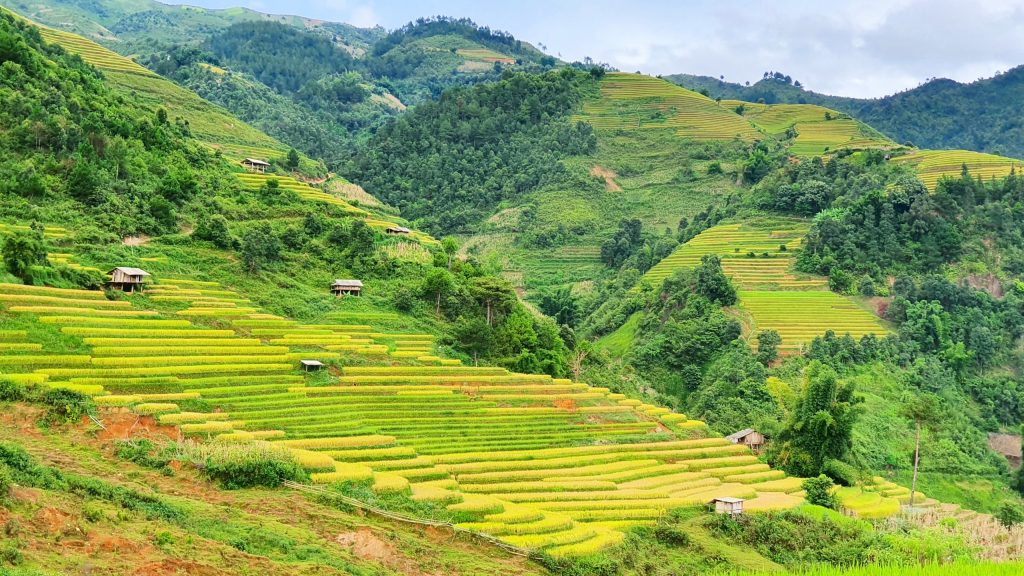Phu Quy Island: A self-guided travel experience
Located in the middle of the deep blue sea, Phu Quy Island is like a hidden gem of Binh Thuan’s coast — still wild, peaceful, and full of natural charm. Far from the crowds and tourist buzz, Phu Quy keeps its quiet, rustic beauty. It offers a rare sense of freedom and calm that’s hard to find elsewhere. From dramatic cliffs overlooking crystal-clear waters, to winding roads through sleepy fishing villages and ancient temples on hilltops — the island’s beauty doesn’t need to shout. It quietly touches the hearts of those who visit.
1. Where is Phu Quy Island?
Phu Quy Island, also known as Cu Lao Thu or Cu Lao Khoai Xu, belongs to Binh Thuan Province. It lies about 120 km southeast of Phan Thiet City and is the most remote island district of the province.
In addition to the main island, the Phu Quy area also includes several smaller islets such as Hon Da Cao, Hon Do, Hon Tranh, and Hon Hai. Though the island covers just over 18 square kilometers, it’s packed with scenic spots, landmarks, and local experiences waiting to be explored.

2.When is the best time to visit Phu Quy?
Just like many other islands in Central Vietnam, the best time to visit Phu Quy is from December to June. During this period, the weather is calm and pleasant — the sea is tranquil, the skies are clear, the sun is golden, and the sand is white. Storm season usually falls between September and November. In spring and summer, the sea remains gentle with light winds and crystal-clear waters, making it easy to travel to nearby islets. However, occasional rough seas can still occur, so it’s always a good idea to check the weather forecast in advance.😌😌😌
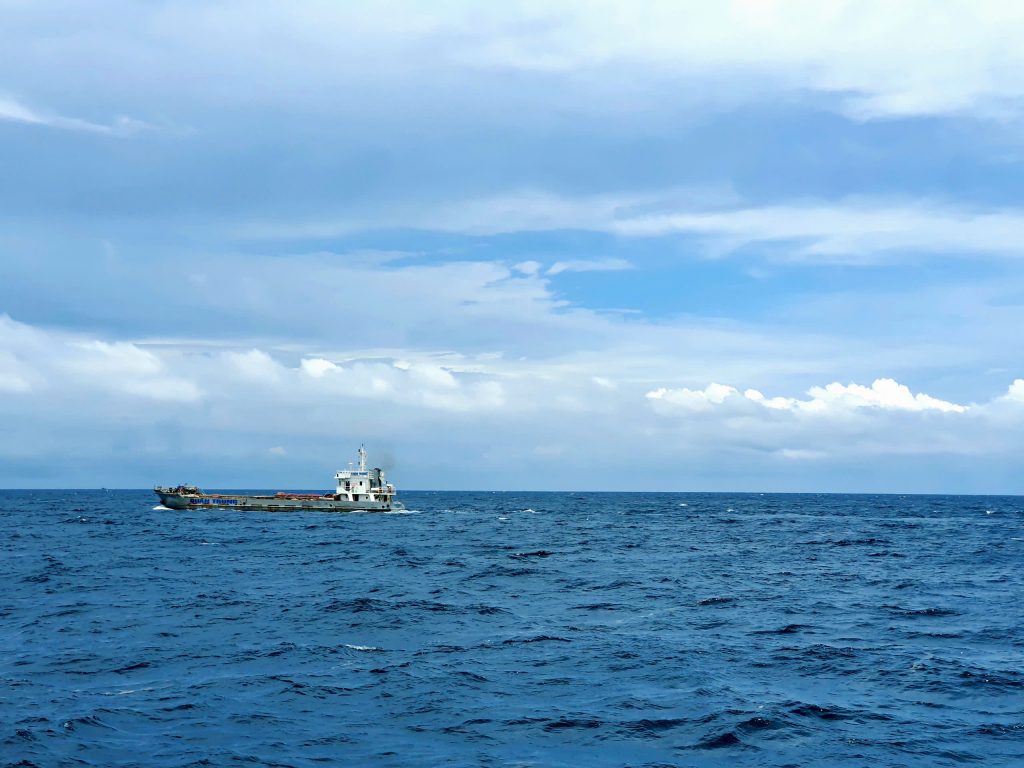
3. How to get to Phu Quy Island?
🛵🚘🚍🚉✈️ Depending on where you are in Vietnam, you can choose the most convenient mode of transportation to reach the departure point. No matter which routes you take, all journeys to Phu Quy eventually lead to one place: Phan Thiet Port (also known as Phan Thiet Harbor), located in Phan Thiet City, Binh Thuan Province. This is currently the only port offering both passenger and cargo ferry services between the mainland and Phu Quy Island.
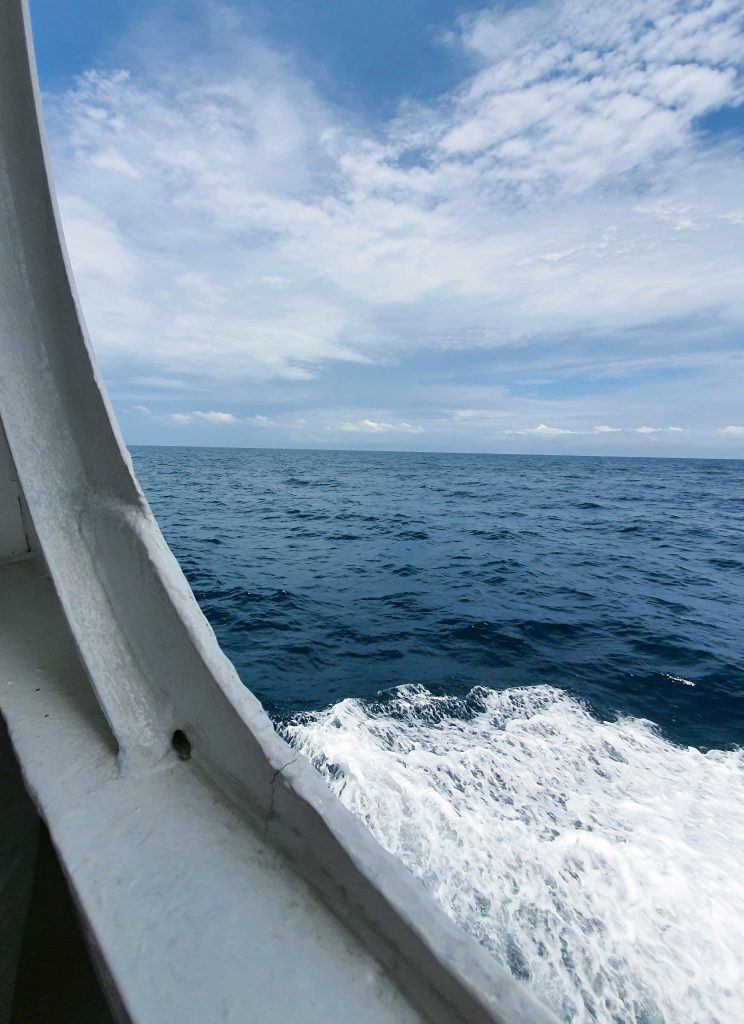
Ferries to Phu Quy include Superdong-PQI, Superdong-PQII, Phu Quy Express, and Phu Quy Island. Most boats depart from Phan Thiet Port between 6:30 AM and 7:30 AM, though on some days you might catch an earlier trip at 5:30 AM, or a later one as late as 3:00 PM.
The journey typically takes between 2.5 to 3.5 hours, depending on the vessel. Ferries offer various seating options, from reclining seats to sleeping berths, and both fan-cooled and air-conditioned cabins. High-speed boats that complete the trip in around 2.5 hours usually cost between 350,000–400,000 VND per ticket.
Once you’re on the island, keep in mind that there are no taxis available. However, you can easily rent a motorbike from your hotel to get around. The roads are in good condition, with one main route running through the island, making navigation easy. And don’t hesitate to strike up a conversation with locals if you need directions — they’re often more than happy to help if you ever feel lost.
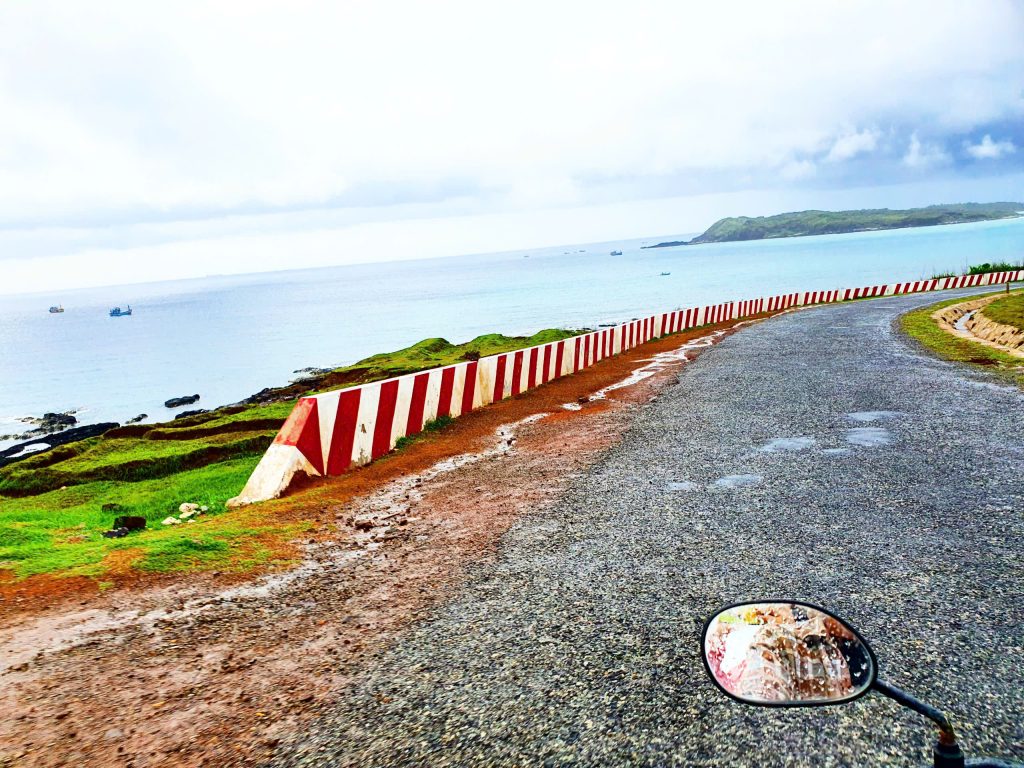
Important Tip: Ferries to and from the island operate on a fixed monthly schedule, so it’s best to book your tickets in advance — they sell out quickly! There are only 2 to 3 trips per day, so make sure to check the ferry timetable carefully to avoid delays in your travel plans.
If you’re booking an express ticket, you might see the option for a sleeper berth — but don’t get your hopes up too high. Just because it’s called a “bed” doesn’t mean it’s all that comfortable. Trust me, at some point, everyone ends up sitting anyway! 😂😂😂
Once you arrive, renting a motorbike is by far the most convenient way to explore the island. Rates typically range from 100,000–150,000 VND per day. If you’re heading out to Hon Tranh Islet, you can rent a canoe or small boat for around 300,000–400,000 VND, which usually fits 8–10 people.
4. Accommodation
🏡 Homestays:
Homestays are a popular choice on the island, offering a warm, local experience that’s perfect for young travelers and those who love to explore.
- Rì Rào Homestay – Located in Long Hai Commune, this charming spot features elegant design and a beachfront location. Prices range from 200,000 to 800,000 VND per night.
- La Isla Bonita Homestay – Known for its unique Bohemian style and spacious layout, it’s ideal for families or groups of friends. Rates range from 3,000,000 to 3,800,000 VND per night.
- Nhà Mer Homestay – Centrally located with a modern and comfortable design. Prices from 300,000 to 700,000 VND per night.
- Linh Ca Homestay – Offers an airy, spacious environment perfect for larger groups. Prices from 250,000 to 600,000 VND per night.
🏨 Hotels:
Perfect for those who prefer comfort and professional service.
- Hai Long Hotel – Convenient location near the center, with reasonable prices.
- Truong Huy Hotel – Clean rooms and friendly service.
- Bien Dong Hotel – Near the beach, great for sightseeing and easy mobility.
🏠 Guesthouses:
A budget-friendly option with essential amenities.
- Huong Duong Guesthouse – Affordable with basic services.
- Sao Bien Guesthouse – Close to local attractions and easy to get around
5. Food in Phu Quy Island:
A trip to the sea wouldn’t be complete without indulging in seafood! While you won’t find many upscale restaurants here, the local eateries offer a uniquely authentic dining experience with fresh ingredients and affordable prices.
Phu Quy is especially famous for moon crabs and king crabs (huynh de) — but you’ll need to order these in advance, as they’re not always available on the spot. Other seafood is generally fresh and inexpensive. For something different, try the island’s local hot beef dishes or grab some tasty snacks around Phu Quy Market for a quick bite while exploring.

One of the spots I personally enjoyed was Luoi Restaurant — a casual, budget-friendly place with fresh and flavorful dishes that really hit the spot. It’s not fancy, but the seafood is reasonably priced and well-seasoned, making it a solid choice for everyday meals on the island.
6. Things to do in Phu Quy Islands:
Phu Quy Flagpole
The Phu Quy Flagpole stands proudly at Dong Cape on Chuoi Hill, overlooking the stunning Ganh Hang Sea in Trieu Duong Hamlet, Tam Thanh Commune. Construction began in June 2015, and the flagpole is perched on a high point facing the East Sea — a symbolic landmark affirming Vietnam’s maritime sovereignty. More than just a scenic viewpoint, it holds deep national significance and is a must-visit when exploring the island.
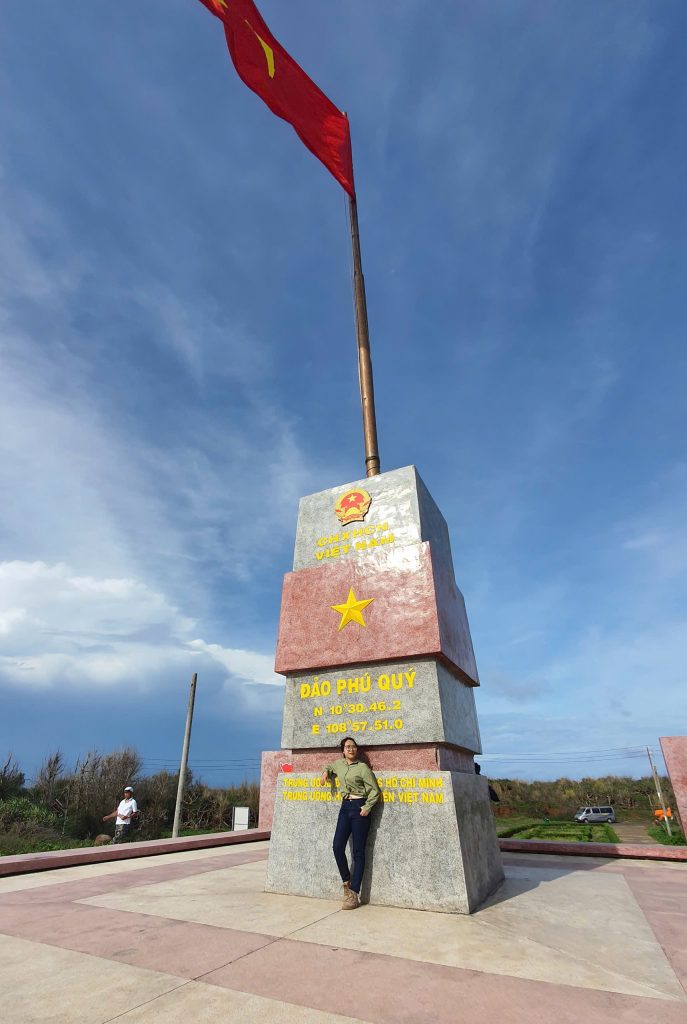
The structure is built with reinforced concrete, ensuring it stands firm against time and nature. The national flag flying atop is made from a special high-quality fabric, designed to withstand strong winds and the harsh weather conditions of the sea. Standing before it, with the vast ocean in view, you can truly feel the strength and pride it represents..
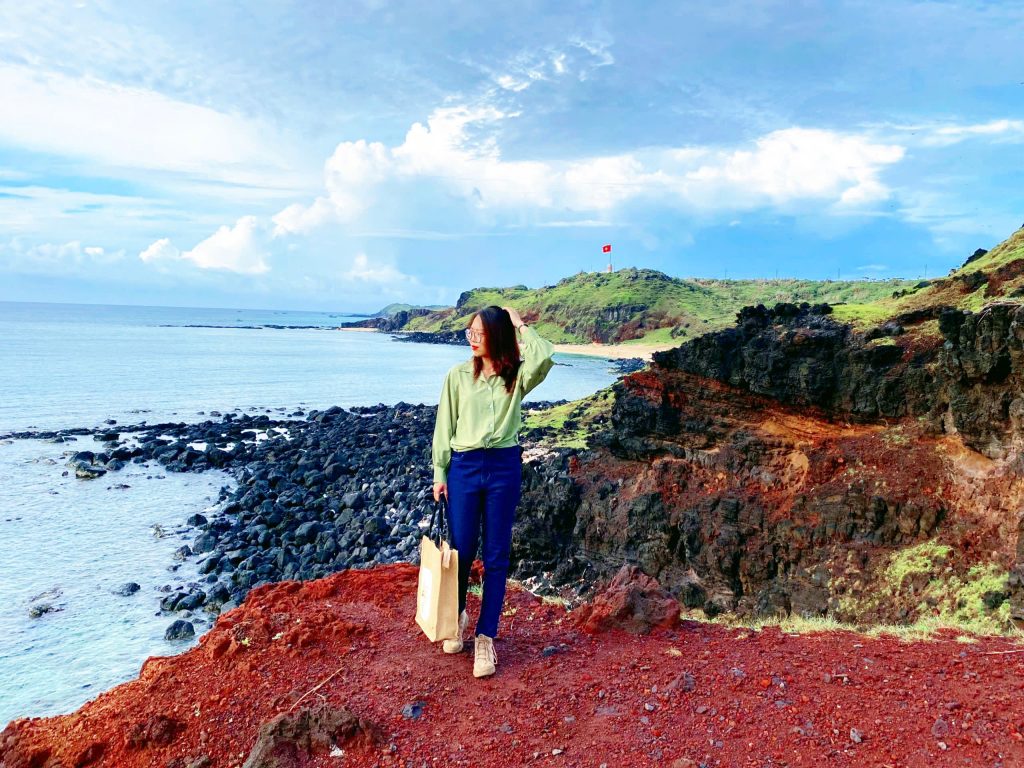
Against the backdrop of a deep blue sky and the gentle sound of waves crashing below, the red flag with a golden star flutters proudly in the wind — stirring not just a sense of pride in visitors, but also a deeply emotional and sacred feeling. It serves as a powerful reminder of Vietnam’s unyielding spirit and unwavering sovereignty at this frontline outpost in the vast ocean.
Phượt Slope (Dốc Phượt)
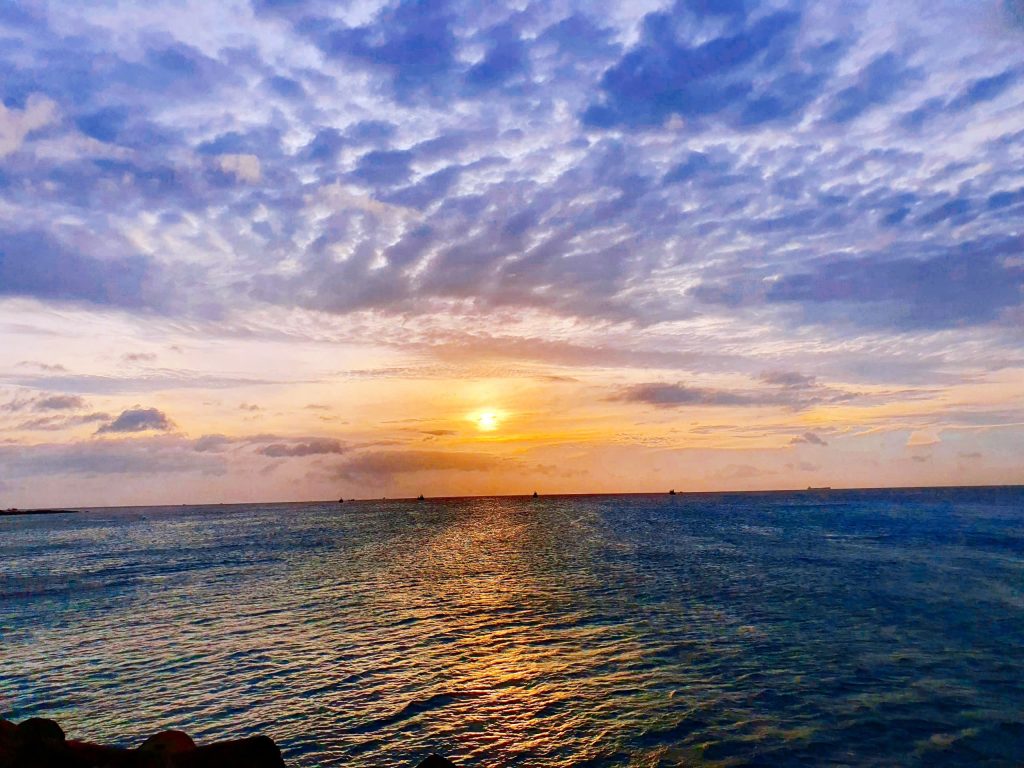
Located along a stunning coastal road, Phuot Slope is an unmissable check-in spot when visiting Phu Quy Island. Though not very long, the road is flanked by contrasting yet harmonious scenery — on one side, gentle hills blanketed in lush green grass, and on the other, the endless blue expanse of the ocean stretching all the way to the horizon.
From the top of the slope, the winding road below curves gracefully like a silk ribbon laid out between untamed nature and open sky. It’s the kind of place where you’ll want to stop, take a deep, refreshing breath, and of course, snap a few “million-like” photos to remember the moment.

Phuot Slope is not just a stop for thrill-seeking riders — it’s also a place to pause in stillness and soak in the pure, untouched beauty of Phu Quy Island, where the blue sky, white clouds, and turquoise sea blend into one breathtaking canvas. It’s a moment of serenity that reminds you just how peaceful the world can be when nature is left undisturbed.
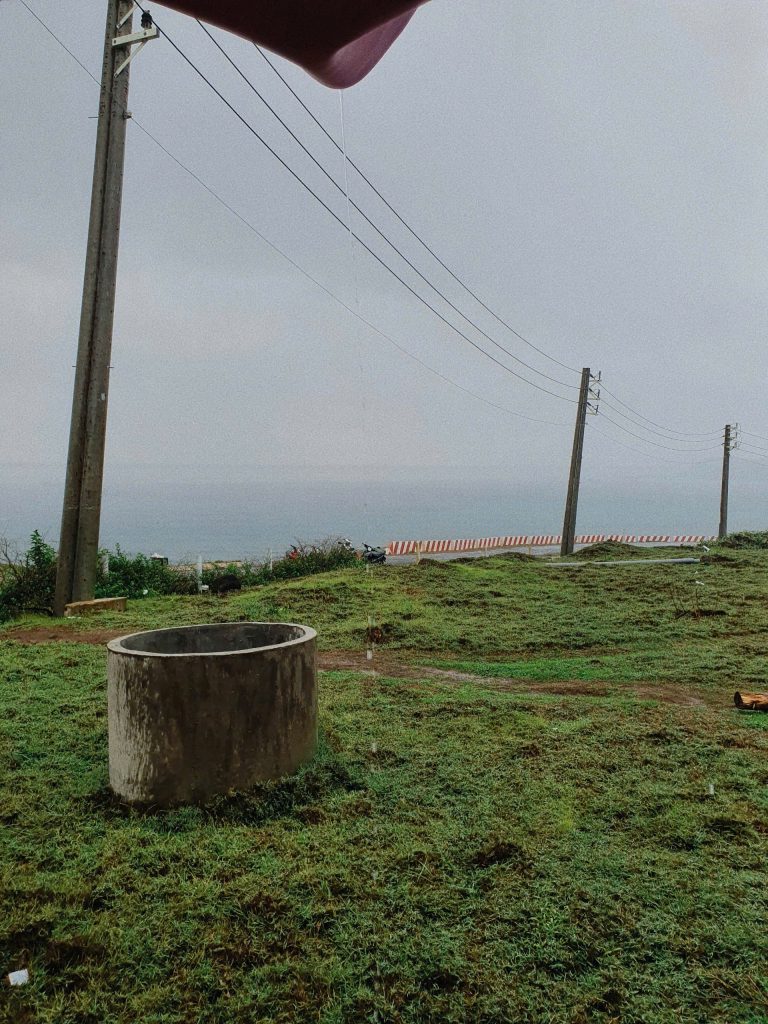
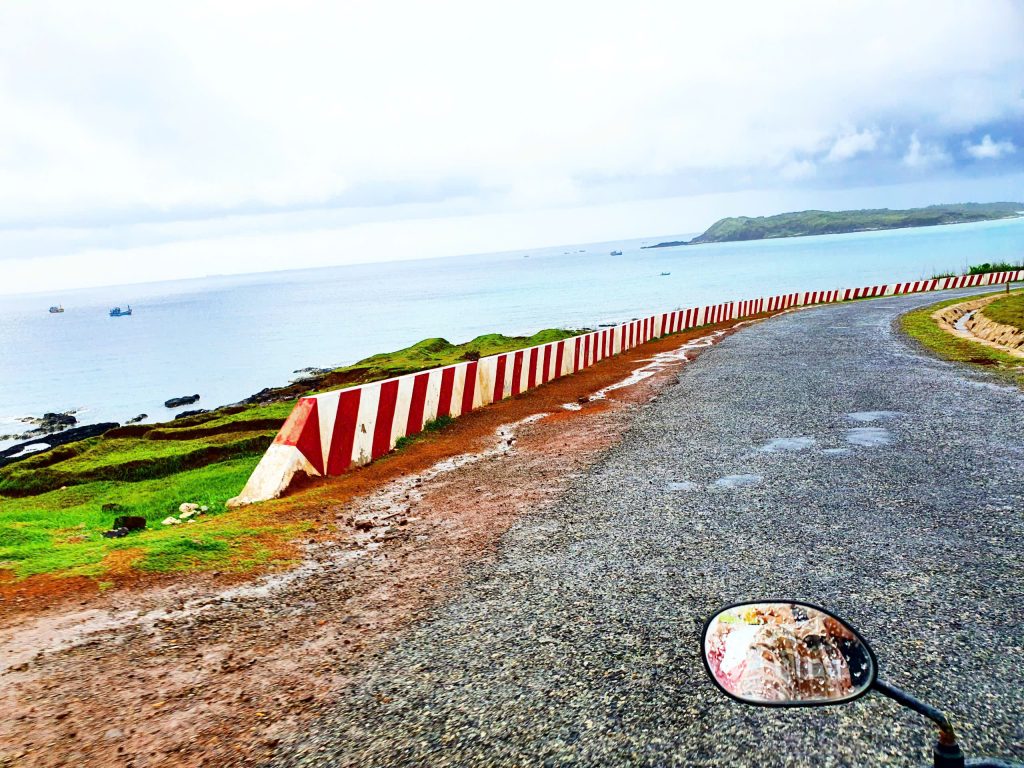
Vịnh Triều Dương
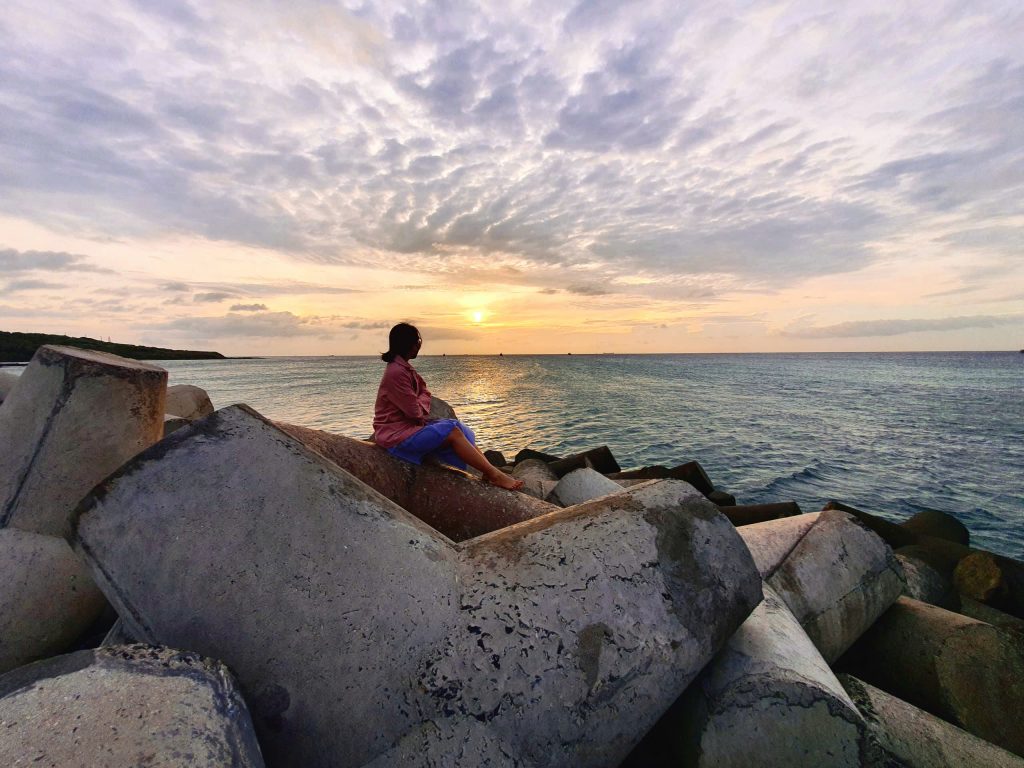
Following the main road that loops around the island, the first stop is Trieu Duong Bay — a place famed for its powdery white sand stretching over 2 kilometers, gently embracing the crystal-clear, jade-green water that remains calm and ripple-free. In the late afternoon, this peaceful bay comes to life as locals gather for a refreshing swim, creating a vibrant yet serene atmosphere by the sea.
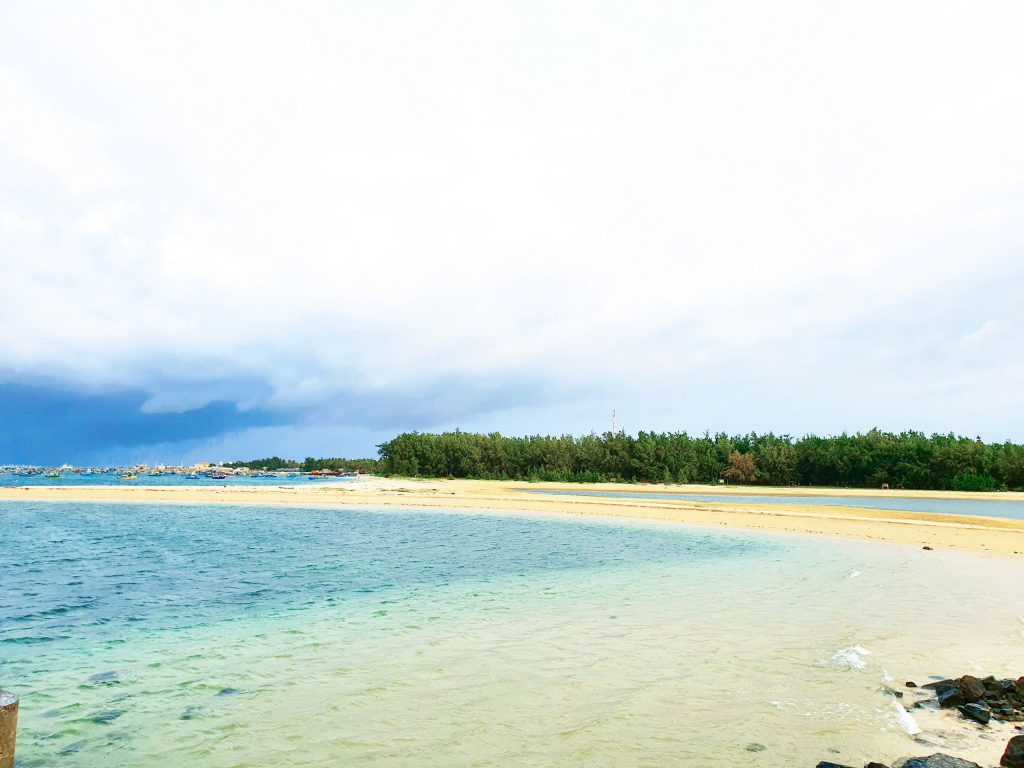
Small beach (Bãi Nhỏ)
This beach forms a stunning crescent-shaped bay, nestled against the mountains with its naturally emerald-green waters — a magnet for travelers and photography lovers alike. To get there, simply park your vehicle nearby, then follow a small trail that winds gently down the hillside to the shore. The short walk is well worth it, leading you to one of the most picturesque spots on the island.
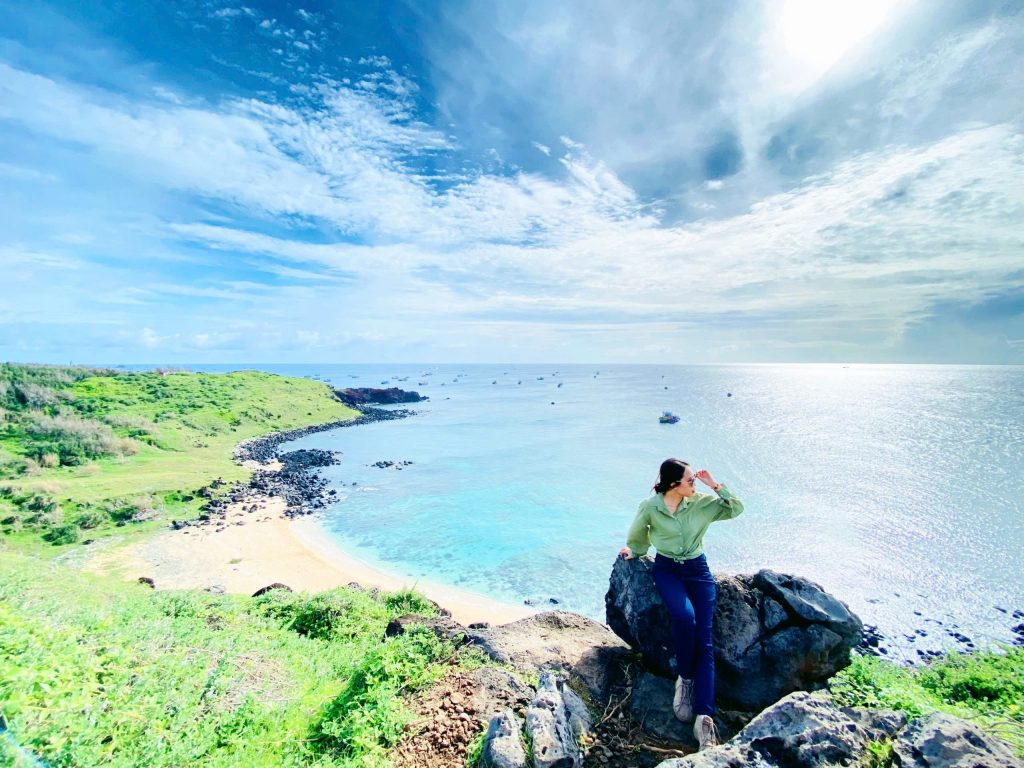
The seawater at Bai Nho – Ganh Hang in Phu Quy is crystal-clear and mesmerizing, blending with the sky to paint a breathtaking natural scene. What makes this spot truly special is the water’s clarity — you can easily admire vibrant coral reefs even while standing on the shore. But if you decide to dive in, you’ll be greeted by an enchanting underwater world, bursting with color and life, just waiting to be explored.
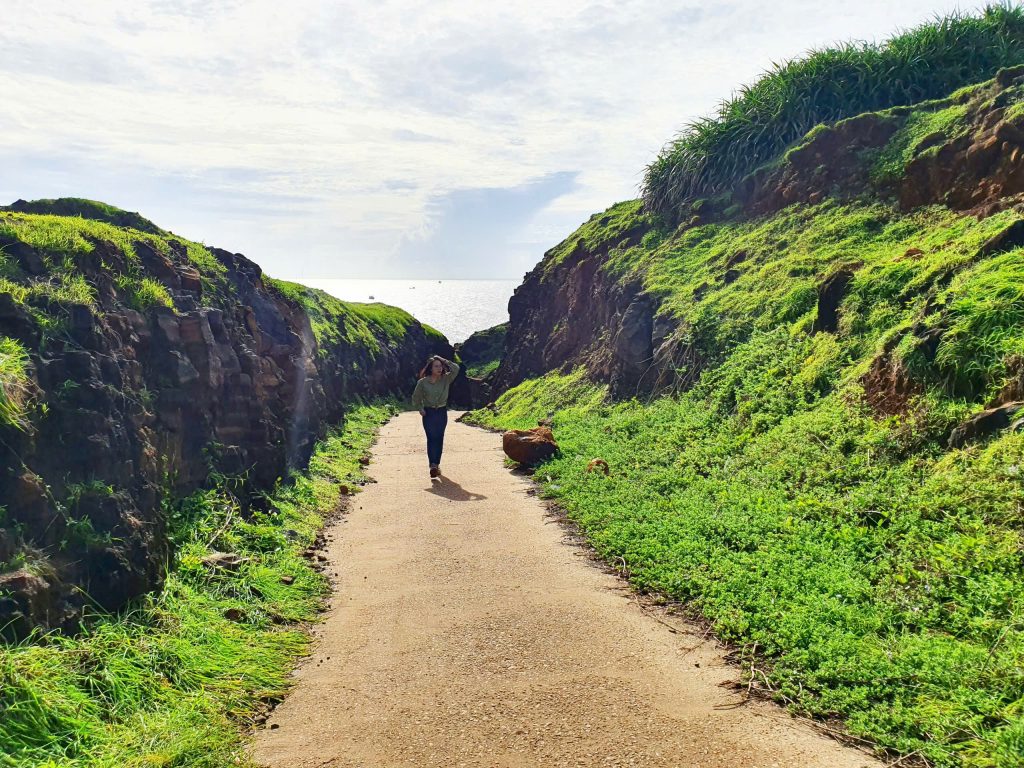
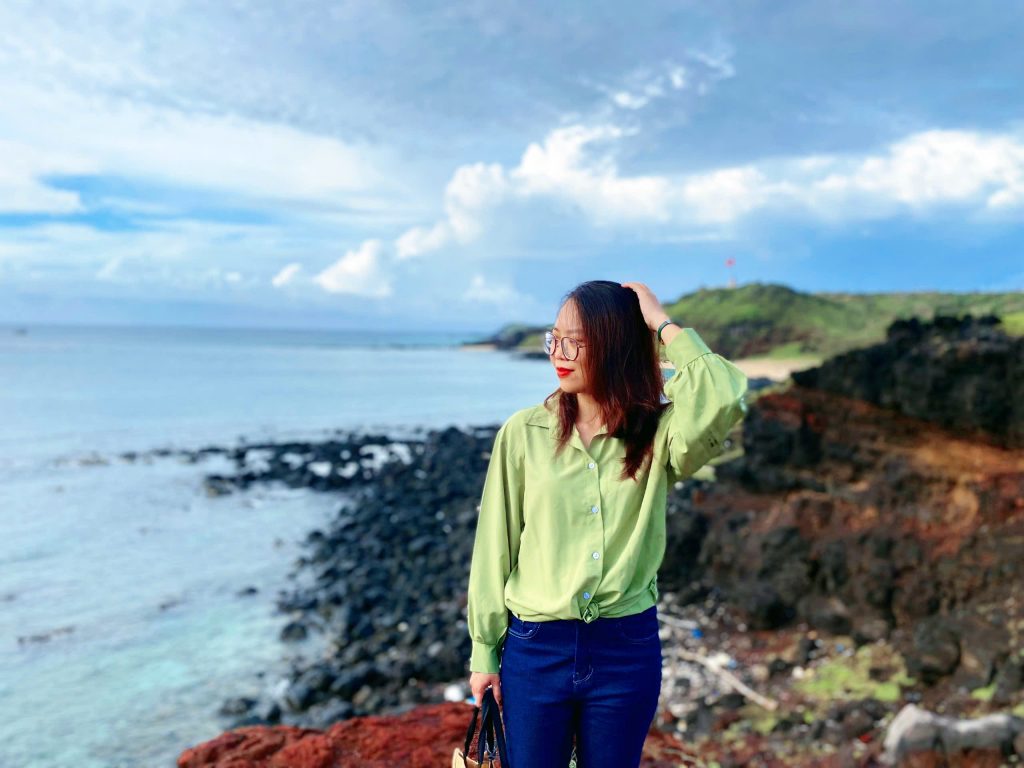
Gành Hang
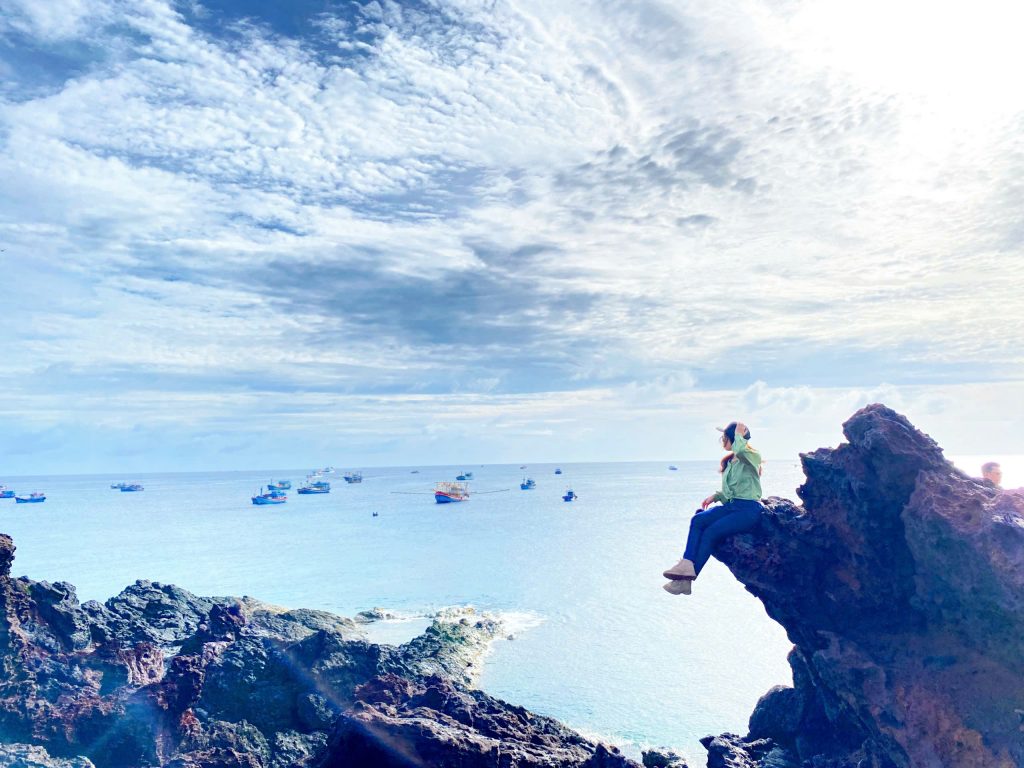
Just about 650 meters from Bai Nho, Ganh Hang features towering cliffs that rise dramatically beside the sea. As waves crash in, they carve out natural wonders like the playful “Khe Sung Suong” (Pleasure Crevice) and a breathtaking “infinity pool” — both of which attract adventurous visitors eager to swim in nature’s masterpiece.
For safety, it’s highly recommended to wear sturdy hiking shoes, as the terrain can be rugged. And when taking photos, avoid getting too close to the edge of the “infinity pool” — the waves can be unpredictable and strong. For the best experience, go with a local guide who knows the area well.

Đỉnh Cao Cát
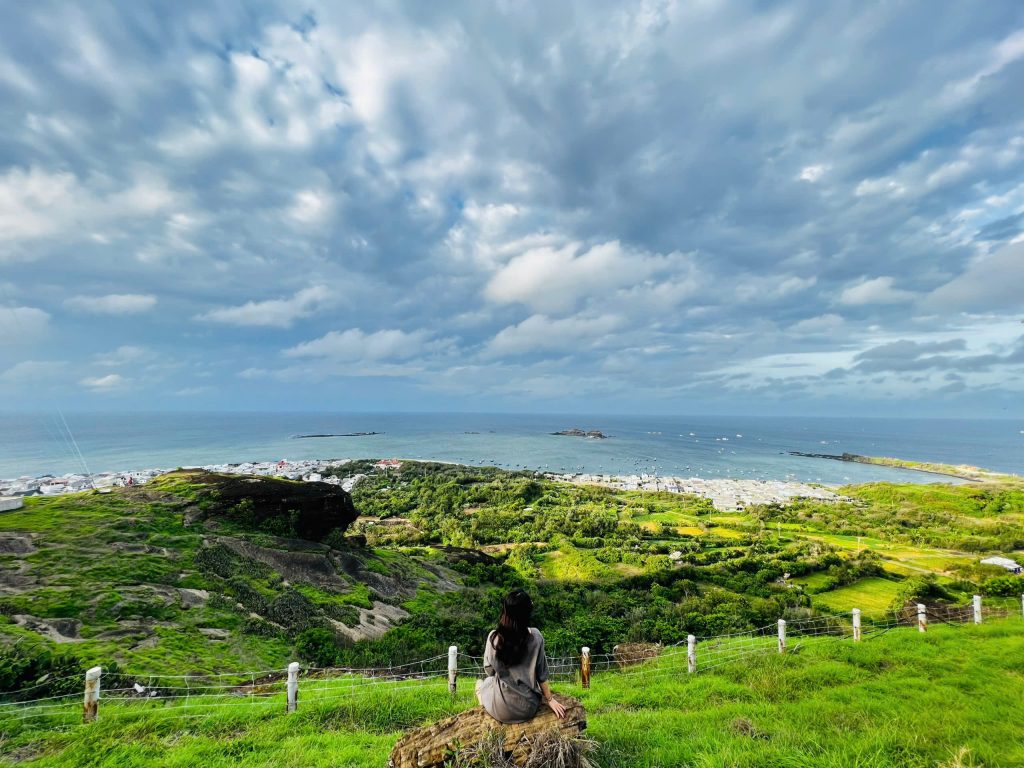
Cao Cat Peak is located in the northern part of Phu Quy Island, about 650 meters from Bai Nho, and is one of the highest points on the island, standing 106 meters above sea level. What makes this spot truly unique are the dramatic rock formations, carved with horizontal grooves by centuries of weathering. These cliffs have even drawn comparisons to the Grand Canyon in the United States — a miniature version, right here on Phu Quy.
Nearby, Ganh Hang continues to impress with its vertical sea cliffs. When the waves roll in, they create stunning natural features like the “Khe Sung Suong” (Pleasure Crevice) and a striking natural infinity pool, both of which attract countless visitors for a refreshing dip in the ocean.
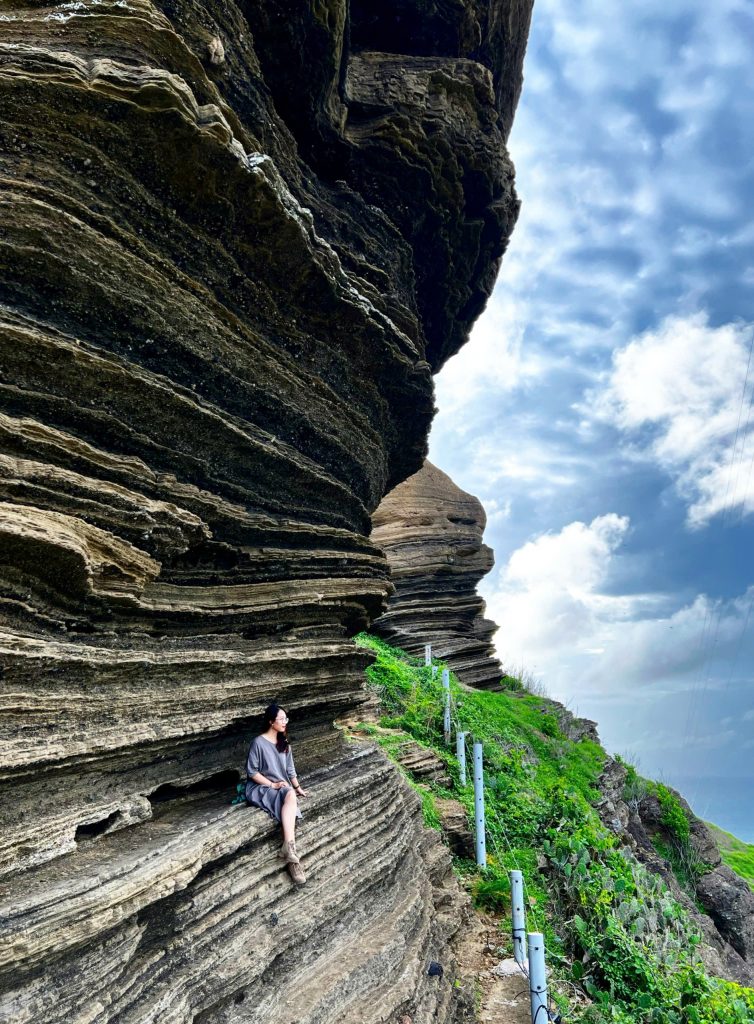
Perched on Cao Cat Mountain at 61 meters above sea level, Linh Son Pagoda is a remarkable spiritual site with over a century of history on Phu Quy Island. What makes this pagoda truly special isn’t just its scenic location, but the fact that it has no residing monk.
Instead, the temple is lovingly maintained by respected local villagers, mostly elders and middle-aged residents, who take turns managing the space — lighting incense, cleaning, and caring for the temple grounds. Thanks to their dedication, the pagoda remains immaculately clean and continues to preserve its authentic charm and spiritual essence.
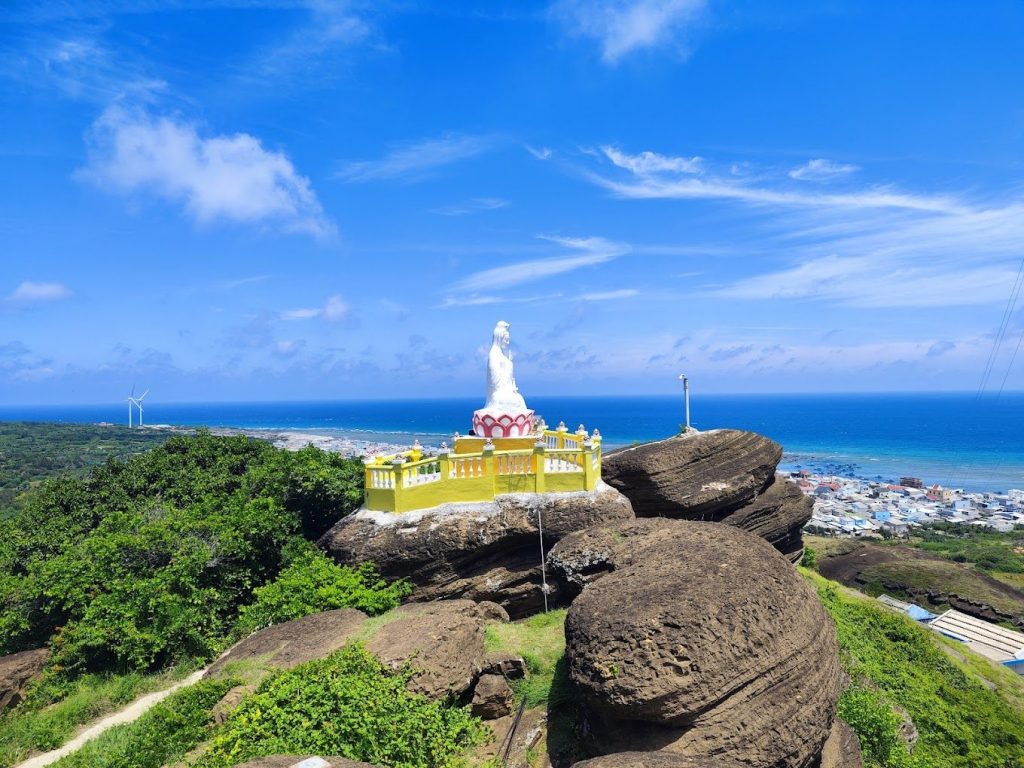
At the summit of the sacred mountain, alongside the large statue of Guan Yin standing on a stone pedestal, you’ll also find massive rock formations shaped like rolling waves — a stunning spot for photos. This is also one of the best places to watch the sunset and take in sweeping views of the local fishing village below — a scene that’s both peaceful and captivating.
Van An Thanh Whale Temple
In 1941, the body of a giant whale washed ashore on Phu Quy Island. Locals respectfully recovered and buried it in a traditional ceremonial manner. It is believed that when alive, this whale measured over 20 meters long, and today, you can still see its preserved skeleton at Van An Thanh Temple.
Visitors to the temple often hear local stories about whales — affectionately known as “Ca Ong” (The Lord Whale) — guiding and protecting fishing boats during storms at sea. The temple not only honors this revered sea creature but also worships the village tutelary gods and ancestral founders. The name “Van An Thanh” reflects the fishermen’s deep wish for peace, prosperity, and safety in their lives and work.

While agricultural villages on the mainland often center around a “dinh” — a communal house that serves as the cultural and spiritual hub — coastal and island fishing communities have their own unique counterpart called a “van”. On Phu Quy Island, a visit to Van An Thanh offers travelers a deeper understanding of the local customs and spiritual beliefs tied to the worship of “Ca Ong” (the Whale God).
Here, you’ll not only learn about the sacred rituals and ancestral reverence passed down through generations of fishermen but also witness how maritime culture is woven into the architecture, altars, and festivals held at the temple. It’s a meaningful cultural stop that gives insight into the islanders’ enduring bond with the sea.
Dinh Thay Nai – Temple of Master Sai Nai
Dinh Thay Nai is a temple and tomb dedicated to Master Sai Nai, a Chinese physician revered for his contributions to the island’s early community. He is honored as a guardian spirit of Phu Quy, remembered for healing the sick and protecting the people during the island’s formative years.
According to legend, Master Sai Nai was a Chinese merchant with a deep knowledge of traditional medicine. On one of his trading voyages to Vietnam, his ship was caught in a storm and drifted ashore at Phu Quy Island. Captivated by the island’s raw beauty and tranquil charm, he chose to stay and devote his life to the local people.
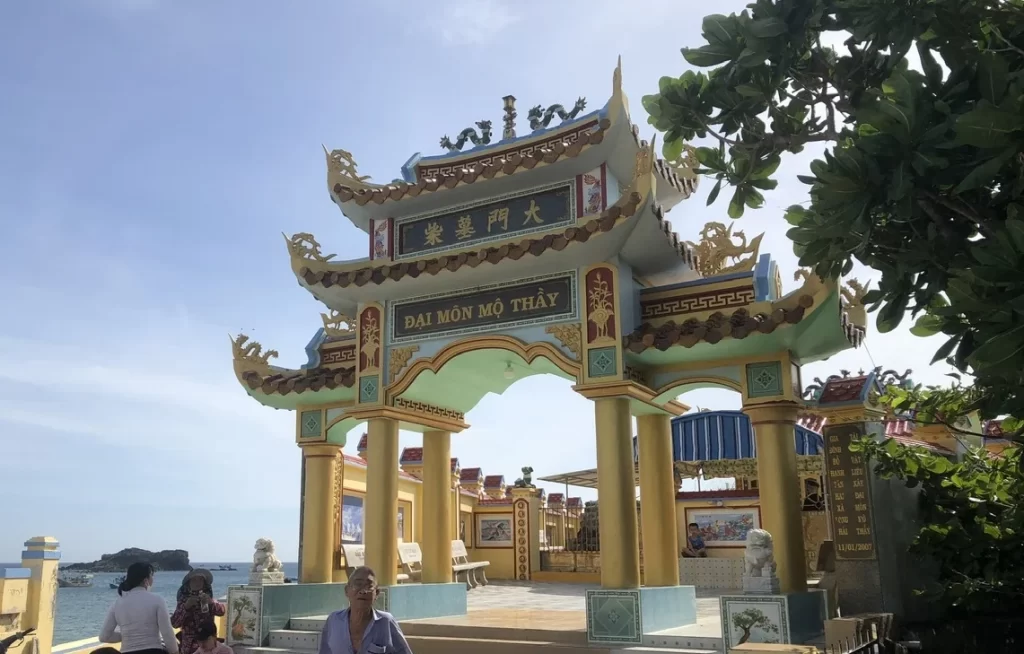
Photo by Bui Phu
After his passing, Master Sai Nai was respectfully buried by the islanders, who built a temple-tomb complex in his honor in 1665. To this day, locals come here to pray during hard times or to wish for bountiful fishing seasons. Every year on the 4th day of the 4th lunar month, the Festival of Master Sai Nai is held with traditional rituals and offerings, reflecting the deep reverence the community holds for him.
The Temple of Master Sai Nai is a historically and culturally significant site on Phu Quy Island. It reflects the rich heritage of the island and the cultural blending between Vietnamese and Chinese communities, who have long coexisted in this remote maritime region. Over the past 300 years, the temple has been faithfully maintained and passed down through generations — from the early Cham settlers to later Vietnamese villagers — each upholding the ancient customs and ceremonial practices that define the island’s spiritual life.
Lang Duong Fish Pond
Lang Duong Fish Pond is a hidden, untouched freshwater pond located near the Tomb of Master Sai Nai in Tam Thanh Commune, on Phu Quy Island, Binh Thuan Province. Although it doesn’t have an official name, locals refer to it by several charming nicknames, such as “Lang Duong Fish Pond,” “Lang Duong Lagoon,” “Ganh Hang Dam,” or simply “the abandoned fish pond.”

In the past, Lang Duong Fish Pond served as a local aquaculture site, where island fishermen raised fish and squid. The stone walls surrounding the pond were carefully hand-built, stone by stone, forming a natural enclosure for marine farming amid the island’s raw coastal landscape.
As offshore fishing grew more prominent, the traditional method of nearshore fish farming gradually faded away. The pond was eventually abandoned, left open to the sea as waves began to flow in freely. Yet in its quiet decay, a strange and haunting beauty emerged — where nature and traces of human labor blend seamlessly, evoking a sense of nostalgia and grandeur. It’s a place that feels both forgotten and timeless, waiting to be rediscovered.
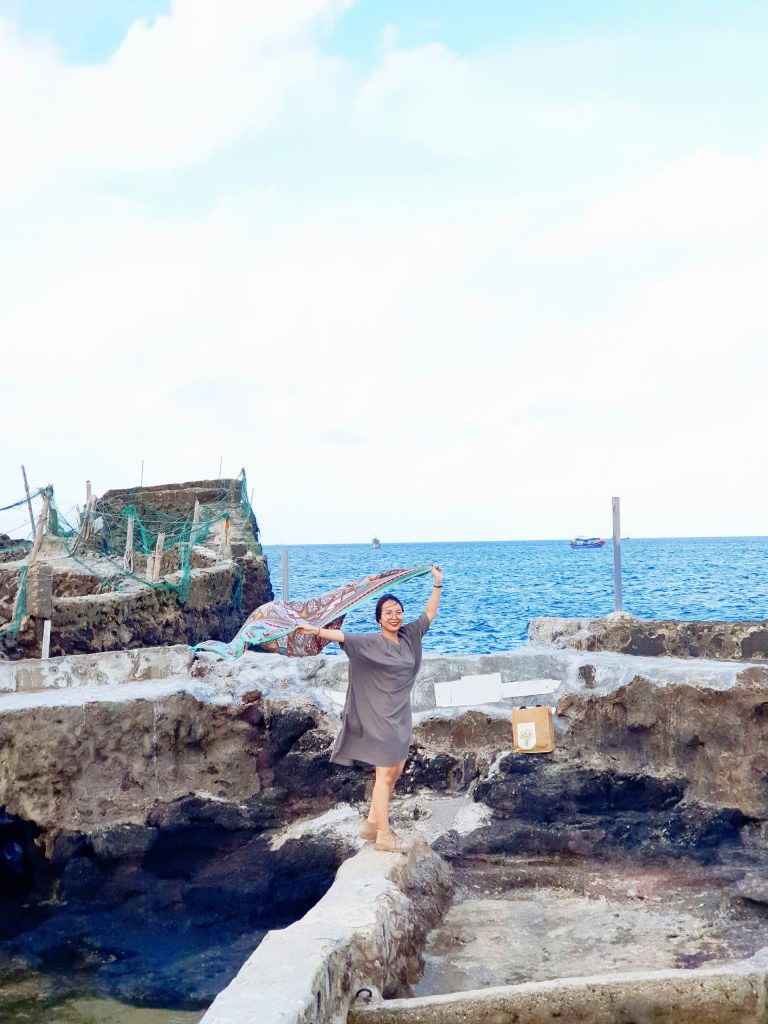
What truly sets Lang Duong Fish Pond apart — and has made it famous in recent years — is its striking, arena-like appearance, which many say resembles a miniature Roman Colosseum, right in the heart of Phu Quy’s wild seascape. This imaginative comparison has sparked curiosity and contributed to the site’s unique, almost mythical charm, making it a must-visit for those seeking both natural beauty and hidden stories carved into the landscape.
Phu Quy Wind Farm – Fields of turbines by the sea
The Phu Quy Wind Farm, also known locally as “Phong Dien Phu Quy,” is located in the northern part of the island, spanning the two communes of Long Hai and Ngu Phung, in Binh Thuan Province. Officially operational since 2012, the site is marked by three towering wind turbines, each standing 60 meters tall, with 37-meter-long blades gracefully spinning against the backdrop of the vast ocean sky.
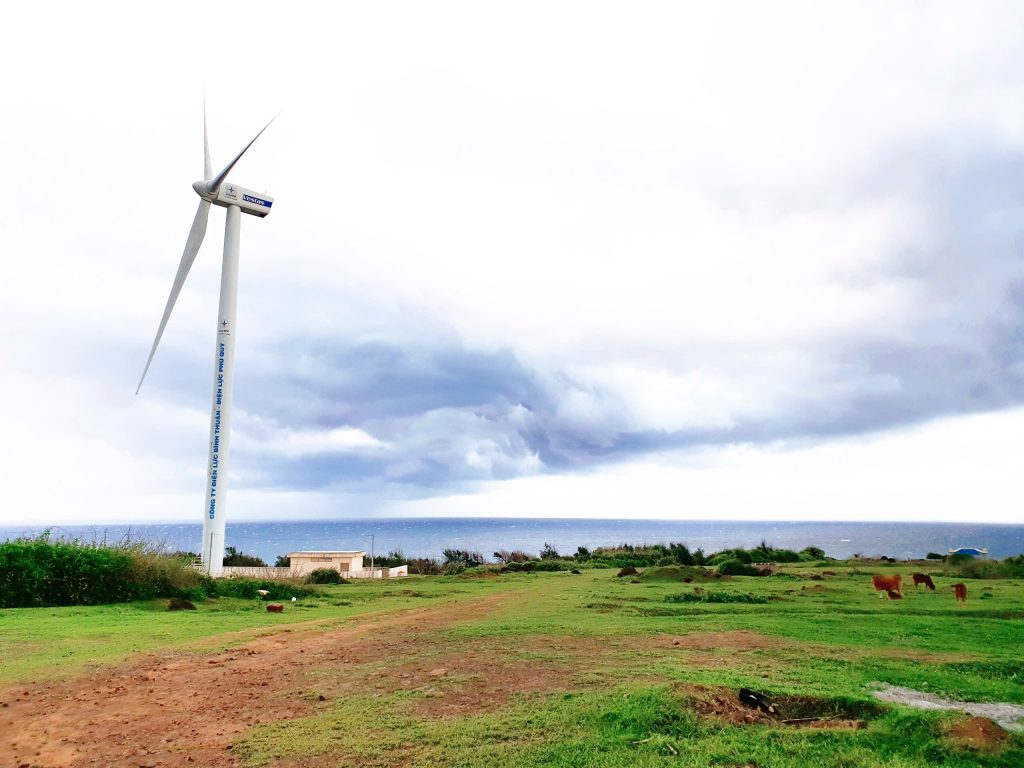
Not only does it provide clean energy for the island, Phu Quy Wind Farm has also become a striking landmark set against the island’s untamed natural landscape. The massive turbines slowly turning in the sea breeze have come to symbolize the harmony between modern technology and the raw, untamed beauty of Phu Quy’s sky and sea.
Yes, this is the spot with those “movie-like” windmills!
They look stunning in photos, though in reality there are only three turbines — so you’ll need to get creative with your angles to capture that cinematic feel. Don’t forget to ask the locals for directions to the spot with the beautiful fence — from there, you’ll get the best views of the turbines in the background!
Làng chài ven biển

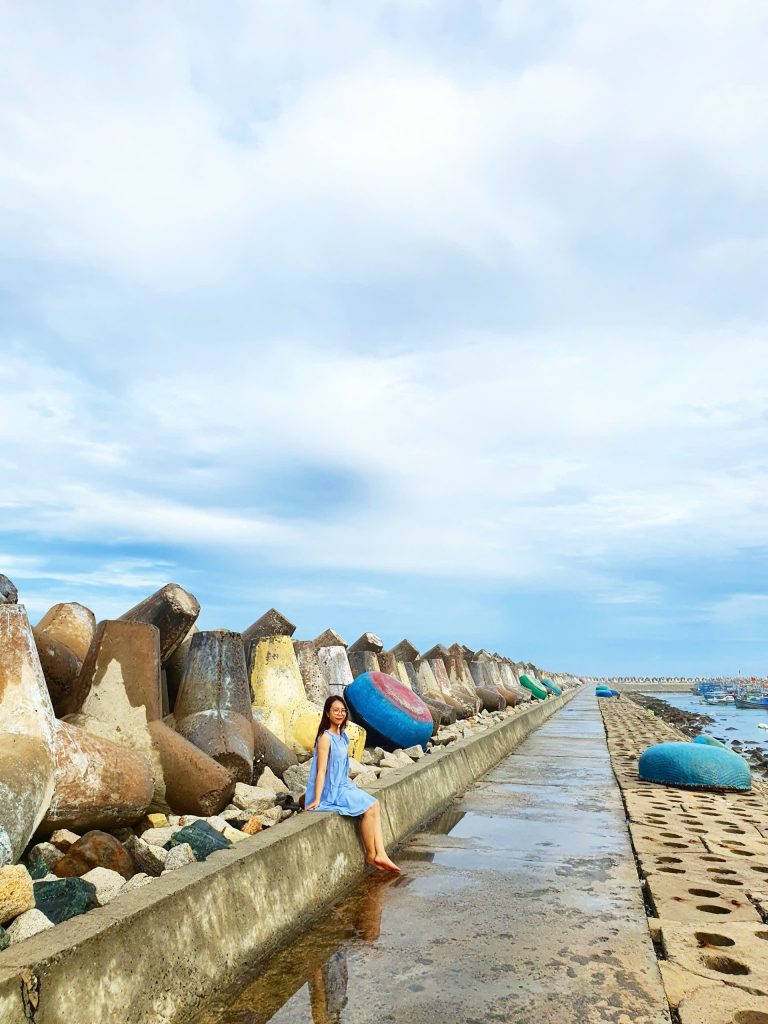
Those effortlessly “chill” photos that look like they’ve stepped straight out of a Korean drama?
They often come from the winding little alleyways of Phu Quy’s fishing villages.
There’s no need for elaborate setups — just take a slow, mindful stroll through the stone-paved paths and timeworn corners, and you’ll find yourself surrounded by unexpected beauty.
Morning light softly filters over tiled rooftops, fish-drying racks sway gently in the breeze, vibrant bougainvillea spill over fences, and a sun-faded blue window quietly completes a picture of everyday life that feels almost cinematic.
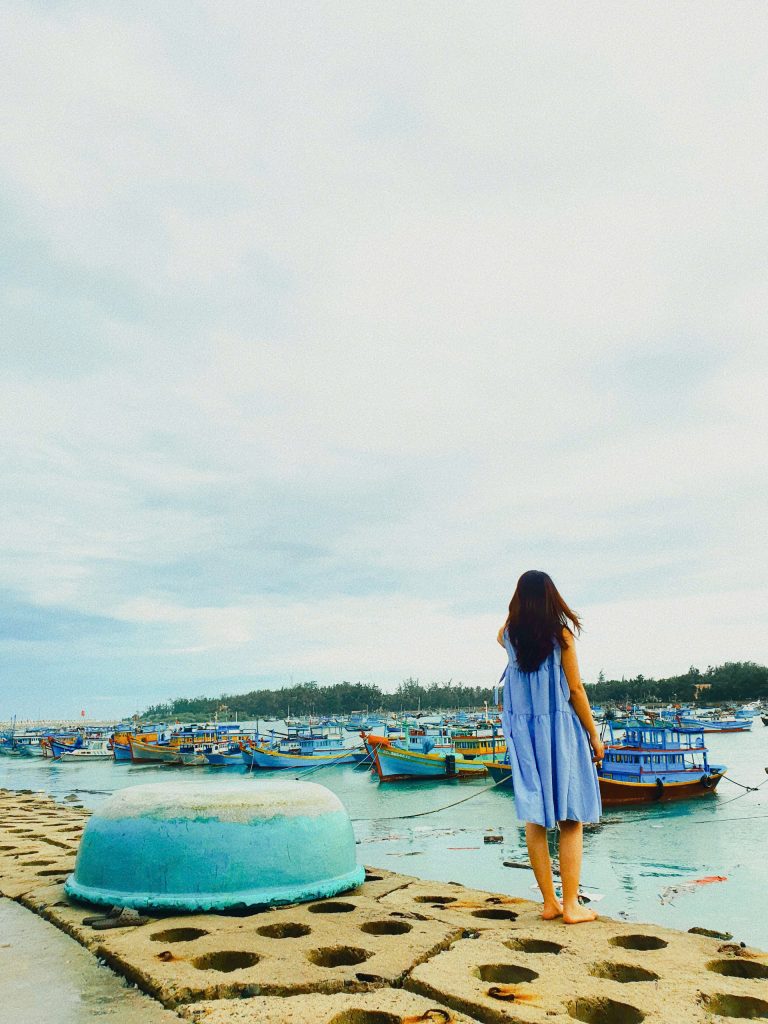
🐟 Long Hai Fish Market:
As fishing boats dock one after another, Long Hai Market bursts into life. The air fills with the salty scent of the sea and the lively chatter of vendors. Here, you’ll find a dazzling array of freshly caught seafood — from fish, squid, and shrimp to rarer local delicacies. Prices are surprisingly reasonable, and the authentic local vibe makes it hard to resist filling your basket to the brim.
Useful tips before heading to Phu Quy Island:
The high-speed ferry from Phan Thiet Port to Phu Quy Island typically takes around 2.5 to 3.5 hours across the sea. Given the nature of the waters — with strong currents and lateral waves — the ride can get a bit bumpy, especially on windy days or during high tide.
To ensure a smooth and comfortable journey, travelers prone to motion sickness should consider taking anti-nausea medication about 30 minutes before departure. Choosing a seat in the middle of the vessel can also help minimize the rocking motion. It’s also a good idea to avoid eating a heavy or spicy meal just before boarding.
🌬️ The wind on the island can be quite strong, so be sure to wear practical clothing and hold on to your personal belongings when heading outdoors.
⛺ If you’re planning to camp overnight, it’s best to ask your homestay host to help apply for the necessary permits in advance, as part of the island’s residency regulations.
🌍 Foreign visitors are allowed to visit Phu Quy Island, but the number is limited, so the permit process may take a bit longer. Be sure to plan ahead if you’re an international traveler.
